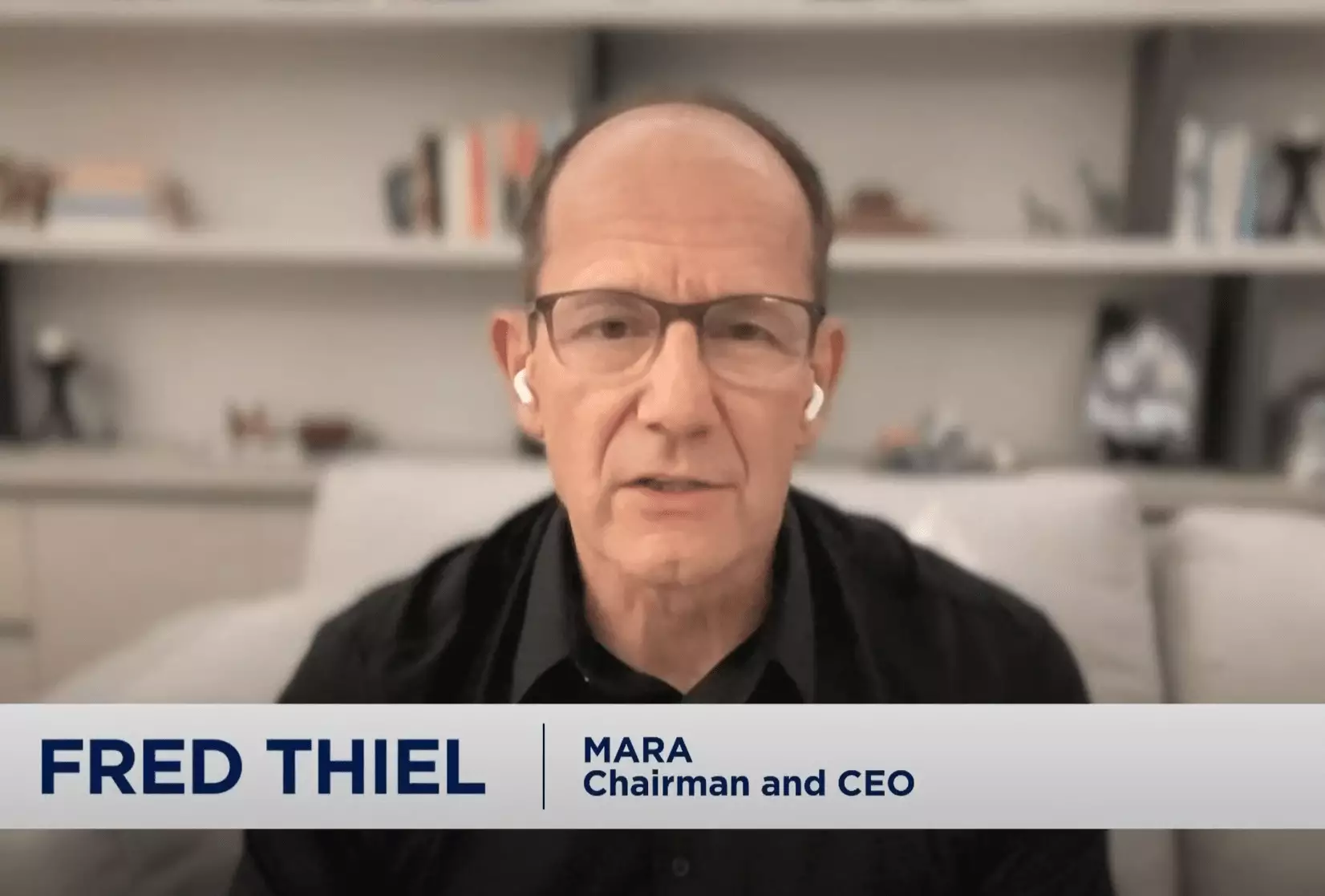In the ever-evolving world of cryptocurrency, Bitcoin continues to carve out its space as a dominant player. Recently, Fred Thiel, CEO of Marathon Digital Holdings, offered an insightful analysis of the factors propelling Bitcoin’s market performance. His comments reflect a growing optimism surrounding Bitcoin’s potential, largely driven by institutional investment and a shift in regulatory dynamics. As Bitcoin’s price flirts with unprecedented highs, it’s crucial to unpack the elements that could influence its trajectory.
Shifts in Institutional Investment
Thiel’s assertion that the Bitcoin price surge is not primarily a consequence of the recent halving is quite striking. Instead, he articulates that the introduction of spot exchange-traded funds (ETFs) has been the real catalyst for this new interest among institutional investors. The initial enthusiasm might have stemmed from retail investors; however, as the market matured, a noticeable pivot toward institutional engagement began to emerge. Thiel’s observation about pension funds leaning into Bitcoin-related investments underscores a significant shift in the market ethos, highlighting that traditional finance is beginning to see Bitcoin as a viable asset class.
This institutional wave is transformative. As major firms allocate resources toward Bitcoin, it not only enhances Bitcoin’s legitimacy but also fosters an environment conducive to sustained price growth. The conversations around pension funds might just be the tip of the iceberg in terms of broader institutional adoption. The traditional financial sector’s tentative moves could herald a period where Bitcoin is not merely a speculative asset but rather a fundamental component of portfolio diversification for many institutional investors.
Thiel argues that the political landscape, particularly in the United States, may play a critical role in shaping the future of Bitcoin and cryptocurrencies at large. He points to the potential of a more favorable regulatory framework, especially if political leaders adopt pro-Bitcoin stances. The implication here is that if influential politicians advocate for Bitcoin—like former President Trump—a regulatory landscape that supports innovation in the blockchain space might become more realistic.
This speculation on regulatory support underscores a need for clarity and stability in the market. An environment that fosters innovation and minimizes punitive regulations can incentivize more firms to explore blockchain technologies or invest in cryptocurrencies. The anticipation of such a shift may lead to a snowball effect, where other countries are urged to adopt similar regulatory policies to remain competitive.
One of the more intriguing points Thiel makes is about the market’s capacity to absorb selling pressure, especially from long-term holders. He notes that many Bitcoin holders are in a profitable position, leading to a gradual realization of gains through sales. This scenario creates a unique dynamic: while it might appear that profit-taking could lead to price declines, the demand for Bitcoin remains robust enough to counteract such disruptions.
Moreover, Thiel’s sentiments on the potential reduction of volatility in Bitcoin pricing are noteworthy. Historically, Bitcoin has often experienced sharp price fluctuations, but the current institutional demand may cushion against significant drawdowns in value. The mature engagement from institutional players might not entirely eliminate volatility, but it could certainly temper extreme price swings, marking a new phase in Bitcoin’s development.
The Competitive Edge of Marathon Digital Holdings
Amidst these discussions, Marathon Digital Holdings appears positioned advantageously. With strategic moves toward capital raising—particularly through the issuance of significant convertible notes—the company’s strategy closely mirrors that of prominent institutional holders like MicroStrategy. However, Marathon sets itself apart with its operational focus as a major Bitcoin mining entity. This operational aspect not only provides a distinct leverage point but also underscores the company’s commitment to sustaining growth in Bitcoin holdings.
As Marathon bolsters its investments in Bitcoin, it simultaneously showcases a model that emphasizes both operational success in mining and strategic asset acquisition. This dual approach could appeal to investors looking for stability in the volatile crypto landscape. The distinction that Marathon represents might also provide it a competitive edge, encouraging further institutional partnerships in the future.
Fred Thiel’s perspectives outline a landscape rife with opportunity for Bitcoin, characterized by growing institutional interest and evolving regulatory discussions. While the journey may not be devoid of obstacles, the overall trend suggests an optimistic future for Bitcoin as it continues to gain traction as a cornerstone of decentralized finance. As the market matures, the interplay between institutional investment, regulatory support, and the operational strategies of companies like Marathon Digital Holdings will play a pivotal role in steering Bitcoin towards new heights. All indicators suggest that the next chapter for Bitcoin is one marked by increasing legitimacy and an expanding role in global finance.

